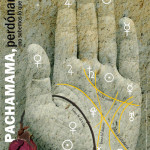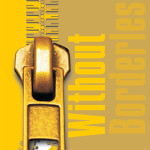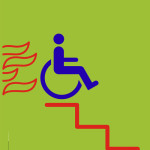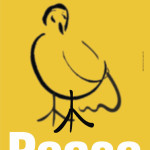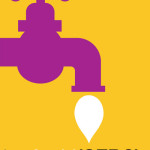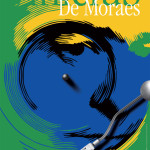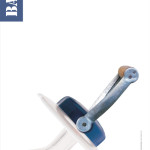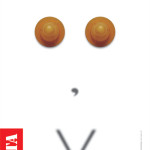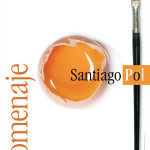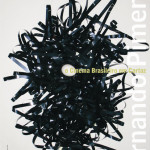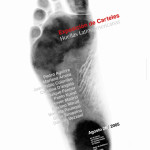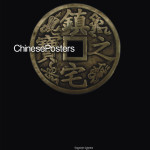All the way from Argentina our new Poster Master is the amazing Pablo Kunst, a designer as friendly and humble as he is talented. Pablo Kunst is the founder and director of the Latin American and Caribbean Alliance of Design. He is a founding partner of the first graphic design school in Rosario, Argentina (Escuela Superior de Diseño Gráfico).
His posters have been published in the Mexican Poster Biennale catalogue, First Art Fax Beijing, China; XII International Poster Biennial in Finland; Marcas Argentinas and World Graphic Design amongst others. Some of his posters are part of private collections in museums and cultural centers all over the world. He has acted as an international juror for design competitions and has given conferences and workshops in Bolivia, Brazil, Chile, China, Colombia, Cuba, Mexico, Peru, Taiwan and Venezuela.
Kunst was the coordinator of the first Symposium of Graphic Design Education at the Bicebé, Bolivia in 2013 and he has been a Delegate for the Icograda Latinamerican Symposiums of Graphic Design Education in Chile and Brazil. He is the author of several books about poster design, including Diseño gráfico en conferencia, El Cartel y sus miradas and Designio y Consideraciones acerca del cartel.
Kunst’s Answers
We asked Pablo our “Poster Poster Questions” and this is what he had to say:
1. What does the poster mean to you and why do you design posters?
I understand posters to be one of the most complete and complex graphic expressions that exist in the profession of graphic design. From its dimensions, which exceed the manually controllable supports, to its syntaxes, which demands both its conceptualization and its production, where different verbal and non-verbal signs intervene individually or collectively with the sole commitment to transmit, to a universe of different cultures and interpretations, one single message. Designing posters has for me, the challenge of trying to unify the understanding and comprehension of that which justifies its existence.
2. What would you say makes a good poster?
A poster either “is” or “isn’t”. It’s that simple. Beyond the aesthetic that inhabits the mind of each observer, the poster has as its sole purpose the transmission in a reduced space of time, of an idea, a concept, a proposal, and if this works then the poster is good. Maybe a poster can powerfully attract our attention, but if its interpretation is confusing or wrong, then it transforms in the mind of the observer into a simple graphic piece that “adorns the surroundings”, which is very distant from the purpose of its existence.
3. What do you think is the role of the poster on the world today?
Much is said about the survival of the poster in a world where the virtual space has gained an undisputed position, but the poster today has exceeded the barriers of the perishable, becoming a spokesman for the history of the people and thus embodied on a carrier more valuable each day, it shares the walls of some of the great museums of the world, and away from comparisons with the canvas of the great masters of painting. The poster remains and will remain a local, regional or international ambassador of the events that interest or concern the world’s community.
4. What is your typical design process for making a poster?
If by process, we interpret the conceptualization and mental development, this will remain the same; the difference exists only in the purpose of each piece, because the massiveness of understanding will depend from the correct choice of graphic language acquired. I understand that there should not be a “style” that characterizes the author, because the poster as such, has the social commitment to report a fact, a stance, a will, a desire, a concern and that this clearly reflects the purpose. Therefore, the resources should be adapted to the expressive needs in order to convey a specific thing with the most appropriate clarity; I understand then, that each poster must give specific answers, using its own languages, to particular needs. I let the subject speak to me, suggest to me, and from there, I decide.
5. If you could chose a poster in history as your favourite, which one would it be and why?
The richness and diversity of posters, is what makes it impossible for me to pick one in particular, because doing so would erroneously transform it, as a personal example. Trends, cultures, arenas make every poster, a unique and irreplaceable piece. The different impressions expressed in these large pieces, open an infinite range of options when it comes to having to “choose”; It would be easier for me to say which one I would not choose.
6. What advice would you give to new designers who might want to become poster designers?
I could talk about suggestions, because advice can many times appear to be rules. Having clarity about what it is about is the foundation of success, and do not talk about winning awards, but about answering to the reason for its existence. A poster must be above all, clear and consistent about its intention, regardless of, in the universality of his understanding, its use as a resource of graphic expression. A poster must have its own language devoid of trends and hosting a unique understanding, beyond the enjoyable aspect of its aesthetics.

